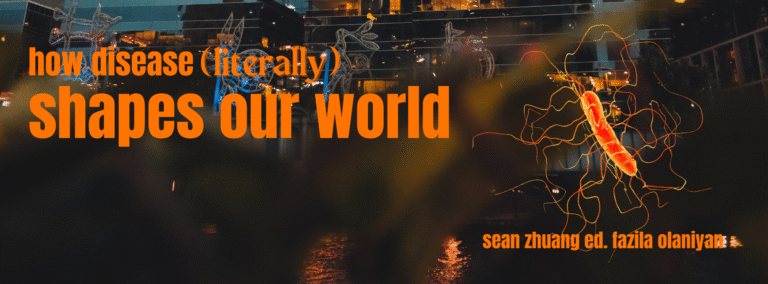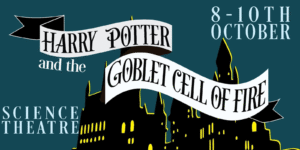
by Carolyn Wang | edited by Siyu Yan
A recurring theme in my recent anatomy lectures has been the noticeable shift away from using “people-based” nomenclature when naming anatomical structures to a more pragmatic system of prefixes and suffixes. While this move brings benefits in streamlining the wonderfully and woefully convoluted world of scientific jargon, it also sparked a curiosity for the faces behind these names. Someone’s legacy has persisted through the fallopian tubes; someone’s dedication to the progression of scientific and clinical knowledge encased in Camper’s fascia. So, I present my top two favourite dissections of the stories behind the names that continue to populate our anatomical language…
(1) Gabriele Falloppio
Namesake of the Fallopian tubes, a pair of tubes which act as a conduit between the ovaries and the uterus for the oocyte.
Gabriele Falloppio (also known by his Latin name ‘Fallopius’), described by Britannica as “one of the most illustrious 16th-century Italian anatomists”, indeed had a most diverse and curious career. His story begins not with his birth, but with death – the death of his father from syphilis when Fallopius was just ten. His father’s passing left him impoverished, resulting in a stint in priesthood, where he served as canon of the Cathedral of Modena. But it was another cloth which called to him, and Fallopius eventually traded his liturgical vestments for surgical ones. He conducted numerous dissections of both animals and humans, as well as rumoured vivisections during a tenure in Pisa…
His collection of exhaustive observations is recorded in Observationes anatomicae (1561), with his work resulting in the discovery of a plethora of anatomical structures, including the fallopian tubes and several major nerves of the head and face. Fallopius was also responsible for naming the vagina, placenta, clitoris, palate and cochlea. Outside of his anatomical endeavours, he also nurtured an interest in botany, with the genus Fallopia believed to be an eponymous term.
Yet the most interesting twist of all is Fallopius’ title as “the father of the modern condom”. With his father’s death likely instilling a vested interest in syphilis, Fallopius would go on to study the disease and was the first to propose the use of a treated linen cap to sheath the penis to prevent transmission. The most common result in a Google search of quotes from Gabriele Falloppio is the following from his book De morbo Gallico liber absolutissimus:
“I have made an experiment on a hundred and thousand men, and I bear witness to the immortal God that none of them was infected”
[“ego feci experimentum in centum et mille hominibus et deum testor immortalem nullum eorum infectum”]
Fallopius died at just 39 from suspected tuberculosis. Yet he is survived by his anatomical discoveries and the 5 billion condoms sold worldwide each year.
Portrait of Gabriele Falloppio by an unknown painter (Hall of the University of Padua).
(2) Petrus Camper
Namesake of Camper’s fascia, the fatty outer layer of the superficial fascia of the anterior abdominal wall, located superficially to Scarpa’s fascia.
Petrus Camper was a man of many titles – physician, anatomist, physiologist, midwife, zoologist, anthropologist, palaeontologist and a naturalist. A Dutchman in the Age of Enlightenment, he collected memberships like a rat collects fleas, being a member of two Royal Societies and four Academies of Sciences.
Camper appears to have been a golden child throughout his life, being the son of a well-to-do minister, a “brilliant alumnus” of the University of Leiden and a professor of philosophy, anatomy and surgery. But despite having fingers in so many pies, Camper’s main focus was anatomy, zoology and his collection of minerals and fossils. A notable highlight is his pioneering work in the field of comparative anatomy, which believed in the unifying thread which looped through all organisms. In a 1778 lecture, ‘On the Points of Similarity between the Human Species, Quadrupeds, Birds, and Fish; with Rules for Drawing, founded on this Similarity’ (what a name indeed), Camper evidenced this theory of unity through his demonstration of the potential to metamorphose horse into human using hand-drawn illustrations.
Camper was also renowned for his interest in the facial angle, perhaps inviting a new title as the father of facetune? His measurements unfortunately served to fuel scientific racism, with smaller facial angles being labelled as removed from the classical ideals of beauty. It seemed that Camper’s eye for beauty extended beyond skull geometry to shoes, as nestled amongst his list of scientific works is a peculiar title, On the Best Form of Shoe; The foot and Its Covering (1861). A link to the English translation is attached below:
https://petruscamper.com/shoe.htm
(To say that this was an examination of the beauty of shoes would be grossly misleading – it is in fact quite a well-written dissertation on the necessity of improvements in the design of footwear.)
The life of Camper was brought to an end at the age of 67 from pleuritis. It seems that having started Camper’s story with a great many lists, we should conclude with one also.
Camper is survived by his fossils, a character of the same name in a Dutch novel whose title translates to ‘washed meat’ and the following banger quotes in his Wikipedia article:
“He investigated inguinal hernia, patella and the best form of shoe…Camper had a Burgundian lifestyle, drank a good glass of champagne and died.”
Portrait of Petrus Camper
Through every tube, fascia and footnote, these names remind us that anatomy is not just a body of knowledge, but the body of those who shaped it, named it, and whose stories live on in its study.













































































































